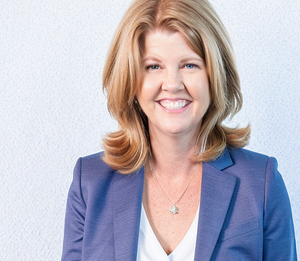Design Briefs are kick-off documents – detailing what the project is about, what the intended outcome is, what the constraints are (timing, budget, staffing, etc), and what's in and out of bounds.
Why go to the trouble? Why not just get started already? Well, when you're delegating to somebody else, you need to paint the picture of what Done looks like. (Otherwise you're setting yourself up to be disappointed.) The Design Brief has prompts to help you offload what's in your brain so you can effectively paint that picture – so that others can take the inspiration and run with it, to produce work that you want and expect. Let's get started!
The Documents:
Next Up:
I suggest watching this video next:

The Transcript:
I'm going to go over the design brief template itself. So here's a clean copy for you to make a copy of and start using with your team. I want to cover some examples so that you know, what each section of the templates trying to do, and then understand what the template as a whole is trying to do. So the mission here is to consciously intentionally make decisions and almost cast it as a bargain, as a deal that you have struck with your team and your business, and the powers that be that this is what you're planting a flag and deciding to do. And it represents the end product of probably a number of meetings. So this isn't something necessarily that you'd sit down and do in one sitting. This is the result of some kickoff meetings, maybe some heavy negotiations about what's in and what's out,
what the budget can stretch to and what it can't and capturing all the trade-offs and making them very transparent. So that in the heat of the battle, three months later, you understand what the trade-off was at the beginning, and that if you're making a change, you're making a conscious change. You're not just sort of misremembering what it was and that you had agreed to.
So I have chosen a website redo and a spring launch, which are quite big. And I did that intentionally because sometimes it's harder to wrap your mind around the bigger stuff. And it's much easier to wrap your mind around the smaller stuff. So project names, simply what you're going to call it. Just a description of what we're talking about. This is just to make sure that cause this sometimes is,
you know, is sort of shorthand and you just want to understand basically what it is. This is a neat section, the very best version of this wood. This is to engage the visionary, to begin enrolling people into the vision, sort of what does this, why are we doing this? What can this do in the world? Why are we bothering to spend time,
attention, money into this? So for the website we want to update to branding. We want to get rid of the nightmare. That is the backend of the website. There is right now there's some custom code. So it takes a PhD to go in there and clone a page, or even sometimes to make copy changes or to update an opt-in. It just seems that you're dependent on people outside the team,
and you want to fix that. You want it to load it a little bit faster and you want people to really say, wow. So those are a mix of what a customer is looking or is thinking when they view this end project. But it's also what the internal team is doing. And maybe some, just even some tech metrics like load fast.
So scope this whole scope section is what is inbounds and what is out of bounds. And I want both to be articulated. So what's inbounds, I've broken this into possibly three versions, three phases of a website redo. And that's because in my hypothetical we have a spring launch coming up and I have determined that the spring launch is going to cramp our style a little bit,
and we're not going to be able to do everything that we would have ever wanted to do in a website redo prior to crunch time. So what we as a team have decided to do is to grab what's essential to be in place for launch and have that be our 1.0, and have it be our in our, in place for spring launch. Now I do suggest that if this were a real document,
we would have a hard date here and I'm just running without one for our example. So I chose some things that are very launch related, the homepage, of course, some new navigation, you menu stuff, all related launch pages and maybe the about page, oops. And what can come later is the media, the speaker, all the blog articles or all of the old podcasts,
any of the social sharing widgets that tend to take a, take a minute to set up if you have any other product or service pages is that was, can catch up. And then depending on how big a website can, can be, there could be maybe things even other than that, which would make into a version 3.0, and I guess that these can come about six weeks later.
So what's out of bounds. One of the things that in our discussions and my hypothetical discussions with the team, one of the things we decided that there was no custom code because we've really been burned on it in the past. And what we want to do is choose standard off the shelf stuff. And if there is a feature that we're asking, either the designer or a tech team,
and they're saying that they can't do it, if they cannot custom code it, we'd like to know that because we'd like to make a different choice. So we really are pinky swearing that there would be no custom code, by the way, I am not, I am not grinding this ax for you guys. I'm just happened to be using it as a hypothetical because this is where strong feelings on the team need to be articulated and a flag planted in the steering document.
So that again, in the heat of the battle, when there's summit fever and somebody isn't getting a feature that they said that they, you know, that they really wanted, and you start to kind of, you know, teach her a little bit on whether or not custom code would be the case and who on the team is going to speak up and say,
well, gosh, didn't you promise? You know, so that's why we're, I've chosen to make this as, as a bald a statement right here as I, as I have, because that's what I'm trying to kind of highlight there. Okay. So when it comes to constraints, these are the three things you want to think about. I've noted here that we don't even have our brand guide,
which is the fonts and the colors and things that's not done yet. And we cannot move. So sure we can make wireframes that the website designer can show us, you know, maybe what a homepage would look like, but we can't move ahead until some decisions are made on fonts and colors and things like that. So that is a huge dependency that we have called out here.
And then we're just going to stick some budgets. We're going to put a 1.0 cost, which has a lot of upfront development. And then the whole project itself, whether it goes into a version 3.0 or not, it needs to not exceed some figure there. So expected outcomes is really, again, trying to remind us why we're doing this. So we want to refresh the look and feel we absolutely desperately need some in-house ability to edit.
That's just come up constantly on our team. And so that's why it's here, like in three different places. And we've also noticed that it actually moves pretty slow. So those are the expected outcomes. There might be some customer related outcomes here. I probably could have hit return and put several more bullets in there, but that's what I came up with.
So what makes this a rip roaring success? Number one, we have version 1.0 in place for our launch, the end, and then we also want to meet the budget. So that is a good, so when a project gets on the calendar, I say that it needs a design brief attached to it. So no fair putting something on the calendar and saying,
this company is going to do this until we have determined what this is. So I really do feel that whoever's relevant. It needs to be meeting and working through this document. And again, things like the scope section and some other sections really are the result of maybe even several meetings where hard decisions are being made. And this is the documentation that comes out of it.
Okay. Very quickly. Let's just run through a spring launch. So in my description, I sort of say what the moving parts are. There's a five day challenge. There's a sales webinar, 10 days of cart open. And then somewhere in there, we have this behind the scenes student success showcase I there's Facebook lives and stories that are going to happen each day for 20 days.
We've already determined that this is 15 days or more. And so probably for the week or 10 days prior, we're going to do Facebook lives in order to gin up some momentum. And then we're going to have Facebook ads throughout. So this is really just to, just to name all of the major moving parts of the launch so that we know what we're talking about.
Okay. The very best version, because it's a launch, we have some conversion goals. We have want 40 new purchasers, 500 new opt-ins, let's say we want to get on somebody's podcast. Somebody big Bernie Brown's podcasts as a guest. Would that be cool if we generated that much momentum and visibility? Okay. So what's in and what's out. This is the result probably of some heavy negotiations.
So for the challenge, we have determined that we are scrubbing the challenge and the emails that support it for, for dates only. There are no copy changes that are being made. That's probably a very major decision that a lot of people had an opinion on. Often we want to refresh and refresh just comes at a cost. It comes at a wear and tear cost and opportunity costs.
We are rewriting the webinar. However, it's about a 50% rewrite. And especially we want to rewrite the pitch part of the webinars. So that's the one that's going to get a lot of copy attention. And the challenge is not, it's just a trade-off that we've decided to make. We are including some new bonuses and we're trying a fast action bonus,
which is for the webinar. And then maybe an early bird bonus that re that is maybe the first, maybe three or four days of the cart open and then expires. So those are new to us and we're going to try those out. We're going to have our student success showcase. So we're going to need to identify five to seven people. We haven't done that yet,
but we do think that's the right number. And then we just got to identify them and invite them. And so we can have those. We also promising to go, our CEO is promising to go live each day at 10:00 AM on Instagram and Facebook. That's a major I put because that's a major, major promise that we think is going to allow us to get these kinds of numbers.
Okay. What's out of bounds. What have we absolutely decided we're not doing well. We're not doing an affiliate program. We wanted to, we perpetually wanted to, but we are making the deliberate decision to not do it because we just don't have the manpower, this go around to do it. And then again, just because we want to call it out,
we are not making changes to either the challenge or the sales email sequence. We are just scrubbing it for dates to make sure that Monday's date is the correct new Monday's date kind of thing. And then of course, because we have new bonuses, we do have to update in the sales sequence, what the actual bonuses are, but we are not rewriting copy,
copy. And then I say, Scout's honor, because that's going to when the, when the heat is on and we want to refresh something, we going to remember that we, we made a bargain, okay. We stick the ads budget. We've also decided as a team that all of this heavy, heavy social engagement is going to require somebody to watch the DMS and to engage.
And we decided that we need to hire out if we are going to have that kind of heavy Facebook live component to it, we are going to have to plus up in order to handle the chitchat from that. And so that's the deal that we struck was that we were going to hire somebody for that, some expected outcomes. One of the ones that I wanted to sort of show is that because there's a success metric down here,
which is all since there's very little rewrites going on, all of the launch sequences are going to be final and approved five days before the very first email. And that means that the team gets to focus on engagement instead of building the plane as we're flying it, this is a major feature to, to launches that I'm a part of, and we are always creating this.
We are always craving the fact that things, the things that we know about are fully put to bed so that we can sort of be there in the moment. But what doesn't happen is promises like this. So that, that can actually be a reality. So I just wanted to call that out as an expected outcome. I'm sure there's more. And then for success metrics,
they're kind of the standard ones. One is that very, that promised prep date. We want our opt-ins. We want 60 sales appointments booked, and we want 40 units sold. So that's how that works. And I hope I've given you a glimpse of how, how you prep for this. This is again, not a document that you just sort of create on your own.
At the very beginning of a project, it represents the negotiations and the deals and the bargains that are struck so that everyone knows what they're building. And everyone knows what then looks like for a particular project.









Member discussion